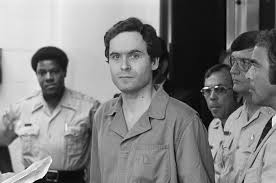Did Ed Gein Catch Ted Bundy? An Exploration of Myths

Introduction
The gruesome tales of Ed Gein and Ted Bundy have captivated and horrified audiences for decades. Both figures have become synonymous with the darker aspects of human nature, yet there is often confusion about their lives and whether they ever crossed paths. Understanding these criminal masterminds is crucial not only for historical accuracy but also for the cultural impact they have left on society.
Brief Overview of Ed Gein
Ed Gein, often referred to as the ‘Butcher of Plainfield,’ was active in the 1950s and is notorious for his grotesque crimes, which included exhuming corpses and fashioning them into household items. His legacy includes inspiring fictional characters such as Norman Bates from “Psycho” and Leatherface from “The Texas Chainsaw Massacre.” Gein was arrested in 1957 and later deemed insane, spending the rest of his life in a mental health facility.
Brief Overview of Ted Bundy
Ted Bundy, on the other hand, is one of America’s most infamous serial killers, responsible for the deaths of at least 30 young women in the 1970s. His charm and intellect helped him evade capture for years, as he was able to manipulate individuals and even escape custody twice. Bundy was apprehended in 1978 and ultimately executed in 1989. His heinous acts have made him a focal point in discussions surrounding personality disorders and criminal psychology.
The Myth of Connection
Despite their notoriety, there is no factual evidence to suggest that Ed Gein and Ted Bundy ever met or interacted in any capacity. Ed Gein was apprehended decades before Bundy’s killing spree began. However, the false narratives and urban legends that have emerged around them speak to a fascination with tales of evil. These stories often blur the lines of reality and fiction, particularly in the realm of true crime.
Conclusion
While both Ed Gein and Ted Bundy are cornerstones of American criminal history, it is important to understand that their lives unfolded in completely different contexts and timeframes, with no direct interaction between the two. The fascination with their stories continues to grow, influenced by media portrayals and public interest in the psychology behind such crimes. Understanding the true nature of these individuals provides insight into the societal impact of crime and the human psyche, reminding us of the importance of factual history in the face of sensationalism.









